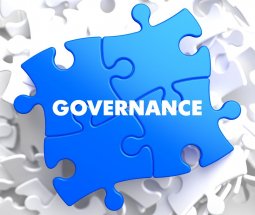Risk Management
Risk management is a very important part of responsible management of any organisation.
As well as needing adequate insurance to protect the club and its members, managing existing risks is essential. This section provides information on how to identify, analyse and control risk.
What is Risk Management?
Risk management is simply identifying, analysing and minimizing risks and developing cost-effective methods of treatment and/or prevention. It may not be possible to have a risk free environment but it is possible to manage those that exist be it financial, legal or physical.
Your club needs to have a process in place to:
- Identify potential problems (or hazards)
- Rectify or prevent the problems, on a prioritised basis
- Provide assistance with managing incidents when they occur
- Ensure a system of follow up occurs
- Ensure this process is continuous
The generic risk management process is not complicated and can be applied to any activity, asset, project or program. The Risk Management Process is summarised below and downloadable resources to get you started are provided:
Identify Risks
Identify what, why and how things can arise as the basis for further analysis.
Analyse Risks
Analyse risks in terms of consequence and likelihood in the context of existing controls. The analysis should consider the range of potential consequences and how likely the consequences will occur. Consequence and likelihood may be combined to produce an estimated level of risk. This should be undertaken on a regular basis. For an analysis tool Click here
Evaluate Risks
This enables risks to be ranked so as to identify management priorities. If the levels of established risk are low, then risks may fall into an acceptable category and treatment may not be required.
Treat Risks
Accept and monitor low-priority risks. For other risks, develop and implement a management plan, which includes consideration of funding.
It is important to remember that your risk management procedures be communicated to all stakeholders and the performance should be monitored and reviewed constantly.
Your risk management plan should be documented. It is important to remember that the successful implementation of risk management is an ongoing process that will involve continuous monitoring and review.
Best practice risk management includes:
- The Committee discussing at regular intervals and agreeing upon the Club's level of tolerance to different risks using the method detailed above.
- Establishing a Risk Sub-Committee to oversee this aspect of governance
- Putting sufficient systems in place to ensure substantial risks, and options to mitigate them (taking steps to minimise the impact and / or likelihood of a risk) are brought to the attention of the Committee in a timely manner
- Allocating resources to conduct risk assessments (identifying and categorising risks) and risk mitigation
- Ensuring education of all members in the risk mitigation based on the nature of participation i.e. player, coach, referee, volunteer
- Reviewing the expectations of the subcommittee that currently deals with risk
Risk Management Subcommittee Expectations
The duties of the Risk Management Subcommittee could include any or all of these areas:
- Advise the Committee on Risk Management issues, with a view to assisting it in assessing Club compliance with the risk management requirements of all funding agreements (and subsequent guidelines)
- Identify and coordinate the management of any risks to the Committee
- Overview the development of the Club Risk Management Strategy
- Monitor compliance with this Risk Management Strategy once established
- Conduct or arrange for the conduct of appropriate internal and external audits of finances
- Review the results of any internal audits
- Address any other issues as defined by the Committee
Helpful Resources:
More Information:

.jpg)

